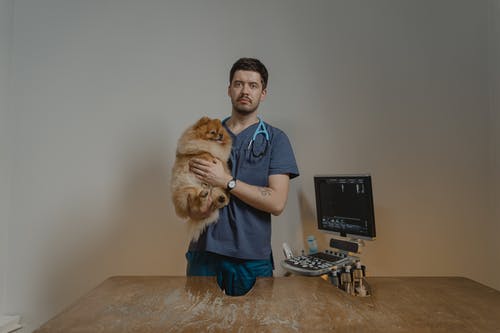Detecting oral pain in our pets might be challenging. This is because pets are skilled at covering up any external signs of distress. Our doctors benefit from hearing from us when we are in pain; however, our pets can not communicate. As a result, we must be able to identify little cues to determine when our pets are experiencing tooth pain and take proactive measures to alleviate the suffering.
Causes
Many conditions could cause dental pain in dogs. Gingivitis, periodontitis, damaged teeth, lacerations, jaw fractures, and oral cavity cancer are among the painful situations that our pets can encounter. The most common reason for oral pain in our dogs is gingivitis, which can lead to periodontitis. Gingivitis and periodontitis are not treatable diseases; they’re ongoing conditions that require constant care.
It has been claimed that by the age of two, more than 80% of dogs have clinical indicators of periodontal disease. Imagine if we ceased cleaning our teeth and going to the dentist. What would the feeling be in our mouths? Proactive measures such as regular brushing and visits to the reliable Rock Spring vet dentist can keep these diseases under control.
Signs
When dogs experience pain, they may show it in different methods. Some instances are as follows:
- Drooling
- Whimpering
- Halitosis (foul breath)
- Behavior change or protective behavior
- Resisting head pets
- Loss of appetite, ingesting slowly or dropping food
- Swollen gums, pet broken teeth
Treatment
To prevent oral pain in our dogs, we should be hands-on. Some dental disease or tooth pain indications can only be seen during a veterinarian’s office oral evaluation. Swollen or red gums indicate soreness and infection of the oral cavity. Plaque or calculus buildup reflects the development of many mouth illnesses.
Dogs with severe periodontitis or abscessed teeth may sneeze or have a nasal discharge since the bacteria has eroded from the oral cavity into the nasal passage. Our goal as pet owners and vets should be to prevent the oral disease from occurring. A preventative approach will ensure our pet’s oral health and minimize mouth discomfort caused by frequent dental problems.
Daily oral home care, a proper diet plan, appropriate chew toys, and routine comprehensive oral health assessments and treatments (COHATs) by your veterinary dentist are all part of a proactive course of action for our pet’s dental health. Under anesthesia, a COHAT with ultrasonic scaling of the teeth above and below the gum line and polishing the teeth is strongly recommended one to two times yearly.
Dental diseases may react better to treatment if found early. Our pets will be happier and healthier when they receive oral care ahead of time. You may also consider laser treatment for cats and dogs. This type of procedure can be used as a supplemental remedy to repair gum tissues and relieve oral pain in your pets.
In the End
Assessing oral pain in dogs is difficult and often missed. Even if the signs are not obvious, we should be aware of how to identify them. A proactive plan that involves frequent home assessments and yearly or biannual veterinary dentist inspections can help detect problems before they become troublesome. It helps us bond with our pets by caring for their oral health and giving them the best life possible.

